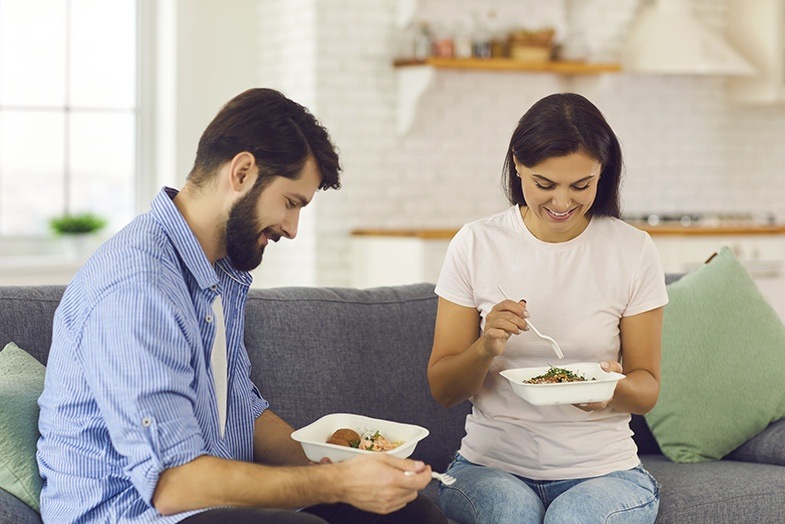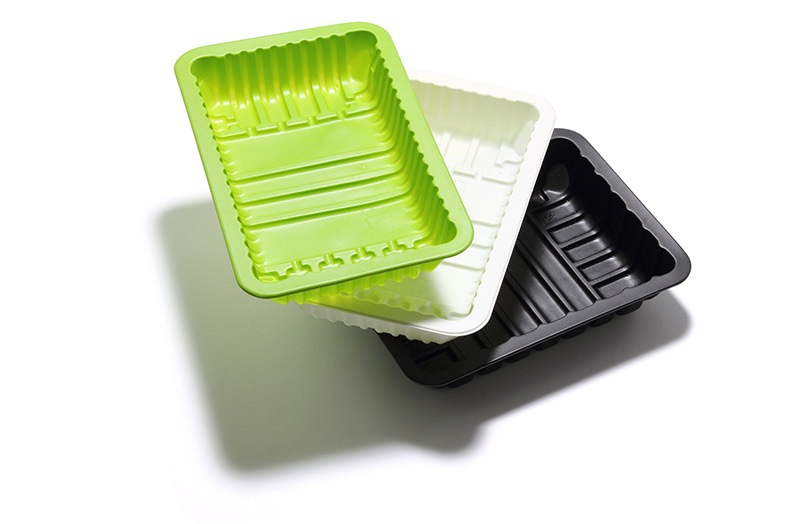THERMOFORMING - TRAY MANUFACTURING
There are numerous variations of thermoforming, distinguished primarily by the method used to conform the sheet to the mould. These range from simple sheet bending, using a folding machine or jig, to more complex processes, such as vacuum forming and pressure forming, which use negative pressure (vacuum) and positive pressure (compressed air).
Forming temperatures depend on the specific thermoplastic being used, but typically range from 149° C to 205°C. Forming pressures can vary widely. Low-pressure processes may require as little as 0.7 bar while sheet materials competitive with glass mat thermoplastic (GMT) can require pressures as high as 207 bar.
With this thermoforming technology, we can produce boxes and bowls from flat foil in a short cycle time. The products we manufacture are mainly used in the food and hospitality industries as packaging materials.

Thermoforming can achieve the high quality and detailed look of injection moulding, without the expensive tooling costs. By using air pressure on the backside of the sheet during the forming process, you can achieve different textures, undercuts and injection moulding details. This is not usually possible with the vacuum forming process.
Mould makers start by creating a pattern based upon drawings and specifications of the custom part. From the pattern, these craftsmen produce either hardwood or aluminium mould. A wooden mould is used mainly for a customer who requires a prototype or a very low volume production run. An aluminium temperature-controlled mould is used for a full production run. When the Thermoforming process is required, temperature control of the mould is used to ensure repeatability.

The Thermoforming technique used by LenoPack provides for forming a more massive/heavier sheet from 1.5 mm thick up to 10 mm thick. The method is accomplished by forcing a hot sheet against a female mould by introducing compressed air into the backside of the heated sheet while applying a vacuum to the tool side. This method will provide as much as 5 bar working on the sheet surface, as compared to the 1 bar in vacuum forming.
Such packaging materials are used by restaurants for home delivery of food, by vegetable processors for packaging soup vegetables, or even by mushroom growers in retail packaging.
Such plastic boxes are commonly referred to in various ways as, for example, a square bowl, a Swedish bowl, a mushroom tray, a vegetable tray, a meat tray, or a microwaveable takeaway box only.


